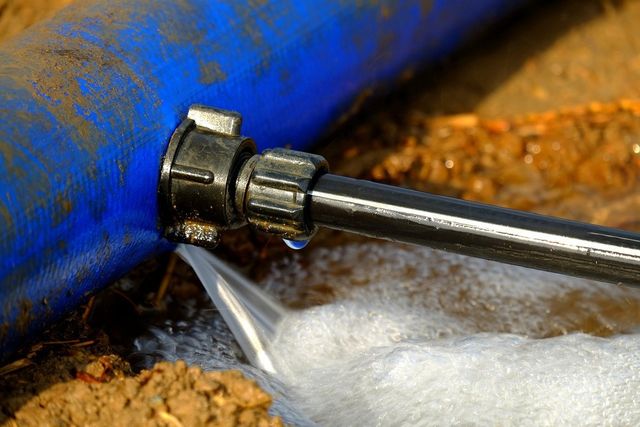They are making a few great pointers on Finding hidden leaks overall in the content down the page.

Early detection of leaking water lines can minimize a possible calamity. Some small water leakages might not be visible.
1. Take A Look At the Water Meter
Every residence has a water meter. Examining it is a guaranteed manner in which assists you find leaks. For beginners, shut off all the water resources. Make sure nobody will purge, utilize the faucet, shower, run the cleaning maker or dishwasher. From there, most likely to the meter as well as watch if it will transform. Considering that no one is using it, there should be no motions. If it moves, that shows a fast-moving leak. If you spot no adjustments, wait an hour or 2 as well as examine back once again. This suggests you may have a slow-moving leak that can even be below ground.
2. Check Water Intake
Examine your water expenses and also track your water intake. As the one paying it, you need to notice if there are any kind of inconsistencies. If you spot sudden changes, regardless of your intake being the same, it suggests that you have leakages in your plumbing system. Keep in mind, your water bill ought to fall under the same variety monthly. A sudden spike in your bill indicates a fast-moving leak.
At the same time, a stable rise monthly, despite having the very same habits, shows you have a slow leakage that's also slowly rising. Call a plumber to completely inspect your residential or commercial property, especially if you feel a warm area on your flooring with piping underneath.
3. Do a Food Coloring Examination
When it comes to water usage, 30% comes from toilets. If the color in some way infiltrates your dish throughout that time without flushing, there's a leakage between the tank and dish.
4. Asses Outside Lines
Don't neglect to check your exterior water lines too. Ought to water seep out of the link, you have a loose rubber gasket. One small leakage can squander tons of water and also surge your water costs.
5. Examine and also Evaluate the Scenario
Homeowners must make it a routine to check under the sink counters as well as also inside cabinets for any bad odor or mold and mildew development. These two red flags show a leakage so prompt attention is needed. Doing regular evaluations, also bi-annually, can conserve you from a major issue.
Examine for stainings as well as deteriorating as a lot of devices and also pipelines have a life span. If you presume leaking water lines in your plumbing system, don't wait for it to escalate.
Early discovery of dripping water lines can minimize a prospective catastrophe. Some small water leaks might not be noticeable. Inspecting it is a proven means that aids you find leaks. One tiny leakage can throw away heaps of water as well as spike your water costs.
If you believe leaking water lines in your plumbing system, don't wait for it to rise.
WARNING SIGNS OF WATER LEAKAGE BEHIND THE WALL
PERSISTENT MUSTY ODORS
As water slowly drips from a leaky pipe inside the wall, flooring and sheetrock stay damp and develop an odor similar to wet cardboard. It generates a musty smell that can help you find hidden leaks.
MOLD IN UNUSUAL AREAS
Mold usually grows in wet areas like kitchens, baths and laundry rooms. If you spot the stuff on walls or baseboards in other rooms of the house, it’s a good indicator of undetected water leaks.
STAINS THAT GROW
When mold thrives around a leaky pipe, it sometimes takes hold on the inside surface of the affected wall. A growing stain on otherwise clean sheetrock is often your sign of a hidden plumbing problem.
PEELING OR BUBBLING WALLPAPER / PAINT
This clue is easy to miss in rooms that don’t get much use. When you see wallpaper separating along seams or paint bubbling or flaking off the wall, blame sheetrock that stays wet because of an undetected leak.
BUCKLED CEILINGS AND STAINED FLOORS
If ceilings or floors in bathrooms, kitchens or laundry areas develop structural problems, don’t rule out constant damp inside the walls. Wet sheetrock can affect adjacent framing, flooring and ceilings.
https://www.servicemasterbyzaba.com/blog/how-to-detect-water-leakage-in-walls/

I stumbled upon that page about Locating water leaks when surfing the search engines. Are you aware of somebody who is in to the subject? Feel free to promote it. Thank you so much for your time spent reading it.